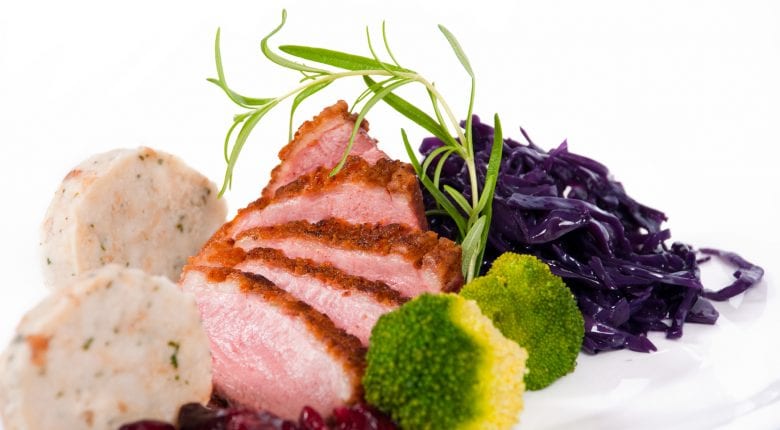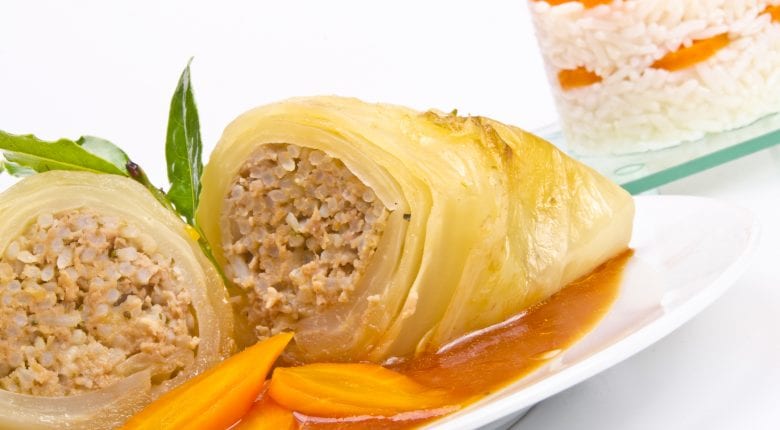As one of the cheapest and most readily available of all vegetables, cabbage is a worldwide food staple that has graced the European plate since the Middle Ages. There are three main types of cabbage: savoy, red and white (including green cabbage and spring greens). Today we’re taking a look at the true festive favourite, red cabbage.
There is nothing more heart-warming, more traditional or more festively appealing than braised red cabbage with apple! With richer Christmas meats like duck, goose, venison or pork it’s undisputedly sensational, but you can’t really go wrong by serving it with the likes of turkey or ham either. However, red cabbage doesn’t only add excitement to the Christmas dinner table, it has a truly magical quality all of its own – it can actually change colour! It’s the chameleon of the cabbage world, and can turn from red to blue ‘just like that’ when you cook it! What’s more, its colour can be altered by changing the acidity of the soil in which it grows. What’s going on?
The changing shades of red cabbage
Maybe you too have noticed that red cabbage is sometimes more purple (or even bluish) than red? Why is that? Well, it’s going to take a chemistry lesson to explain why…
Red cabbage leaves contain anthocyanins, water-soluble dyes that appear red, purple or blue depending on ambient pH/acidity levels. They act as, what chemists call, acid-base indicators (or pH indicators). When pH levels are low, i.e. in more acidic conditions, these indicators turn red. If, on the other hand, the pH levels are high, i.e. in less acidic conditions, the indicators turn purple, or even blue. So, in acidic soils the cabbage grows redder, and in more neutral-alkaline soils it grows purple or blue. In days gone by, before the standardised use of fertilizers and soil sampling technology, cabbages probably varied in colour to a greater extent than they do today – taking on different hues in accordance with the more varied natural soil conditions. Today, growers sometimes choose to encourage certain colours, for example by adding vinegar to the soil for a redder shade or sugar for more of a purple tone. Baking soda can even be used to create cabbage with a bluish tint. So, if you want to keep your cabbage red when cooking it, add a little vinegar!

Some recipes already include this, e.g. braised red cabbage recipes incorporate wine vinegar or balsamic vinegar.

A great source of vitamins through the colder months
Red (and white) cabbages are available all year round but are particularly popular as a cooked food when the weather turns cold. This has been the case for centuries, with their long shelf life making them an ideal way for our forefathers to enjoy full stomachs and remain fit and healthy throughout winter. At a time of year when natural vitamins can be in short supply, red (and white) cabbage can help to strengthen our immune systems with their many essential nutrients and vitamins. All types of cabbage are considered to be excellent sources of good health with a host of attributed health benefits: cabbage is believed to help regulate blood pressure, blood sugar and cholesterol levels, as well as aid digestion and perform veritable ‘miracles’ in the gastrointestinal tract. However, it’s not just cabbage’s health benefits that make it a great vegetable to have around, it is also a versatile and great tasting ingredient. As stuffed cabbage leaves, coleslaw, sauerkraut, or in a vegetable curry – with a little imagination, raw or lightly cooked, cabbage is a true culinary delight!

What’s your favourite way to eat cabbage? Please use the comment function below this post or start/join in discussions with us on Facebook.